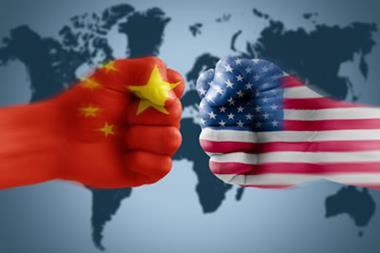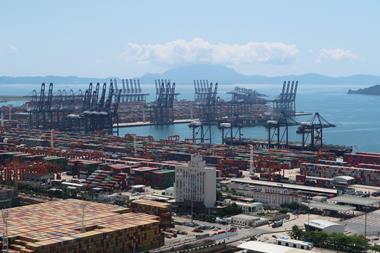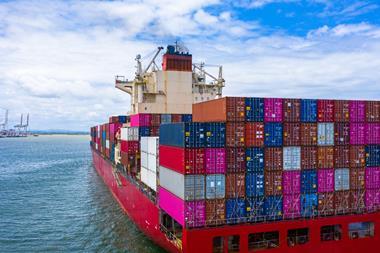The Strait of Hormuz is a vital conduit for transporting crude oil to the rest of the world and a huge, connected risk in global supply chains. Here’s why risk managers should take note of recent tensions
The current tensions in the Strait of Hormuz between the US and Iran could jeopardise an estimated £180 billion in crude oil exports.
This in turn could impact many leading economies, including the US, China and India, according to analysis from Russell Group, a data and analytics company.

The Strait of Hormuz is one of the world’s most valuable shipping lanes, with an annual flow of trade of £544 billion. Crude Oil makes up 69% of the total exports in a year.
Russel’s analysis comes after a recent flaring of tensions between the United States and Iran.
Last week, Iran seized Advantage Sweet, a Marshall Islands-flagged tanker in the Gulf of Oman that was heading for Houston, under charter by Chevron.
Many believe this was in retaliation for the US seizure of the Suez Rajan, believed to be carrying Iranian oil, which was redirected to the United States.
The tensions escalated further, with Iran seizing another tanker, the Niovi, a Panama-flagged tanker, which was sailing from Dubai to UAE port of Fujairah yesterday.
”The Strait of Hormuz is one of the world’s most valuable shipping lanes, with an annual flow of trade of £544 billion.”
There are fears that any escalation in the Strait of Hormuz, which is home to many Gulf oil-producing nations, could have repercussions for the global economy.
Further analysis shows that the US, China and India would experience some economic damage from any further Iranian escalations in the Strait of Hormuz.
India has the largest exposure, importing an estimated £75 billion in total ship trade (including crude oil and other commodities), from UAE, Iraq and Saudi Arabia combined.
Meanwhile, China and the US import an estimated £15 billion and £13 billion in commodities every year from Saudi Arabia.
What does it mean for risk managers?
The Strait of Hormuz is a vital conduit for transporting crude oil to the rest of the world and a huge, connected risk in global supply chains
Suki Basi, Russell Group MB commented: ”The recent escalation in tensions in the Strait of Hormuz is a worrying sign for all participants in the global maritime, oil and finance supply chain ecosystem.
“Understanding this interconnectivity is fundamental to navigate trade in a connected economy”
”Key event drivers for Connected Risk are the ways in which political, economic, and environmental stability or supply chain, credit and cyber security risks combine to disrupt trade and cause operational and financial loss.
“Organisations are exposed to Connected Risk when they fail to grasp, or disregard, the multi-dimensional nature of business-to-business relationships where a single event could impact firms and disrupt trade.
“Understanding this interconnectivity is fundamental to navigate trade in a connected economy and to maintain successful and sustainable business performance.”
What should risk managers do next?
Risk managers and their (re)insurers will need to survey the risk landscape more often to pick up emerging threats/scenarios that could trigger events.
Basi said: “Once connected risk is better understood, and the inter-dependent drivers that underpin this concept are known, we can then place more emphasis on the circularity of the threat-scenario-event, which cause more inter-related, connecting scenarios to accelerate in frequency and effect.
”The need is to be able to quantify that connected risk, to be able to run meaningful scenarios to evaluate potential impacts on balance sheets and asset portfolios and to ensure that reinsurance and similar risk transfer or risk finance protections are optimised.
”Together with our (re)insurer clients and Corporate Risk Manager Working Group, we are building a scenario factory to satisfy these needs and turn what could be perceived as a serious business threat into an opportunity.”

















No comments yet